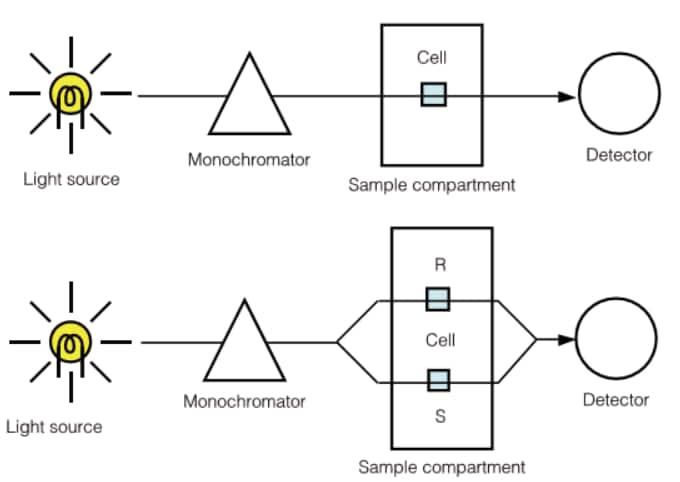How are single beam and double beam instruments different?

In single-beam systems, monochromatic light from a monochromator (only a sample beam) enters the sample compartment and hits the detector directly. In a double-beam system, however, the monochromatic light from the monochromator is split into a sample beam (S) and reference beam (R) before entering the sample compartment and hitting the detector. Each of these designs is illustrated here. The single-beam configuration has a simpler design because it does not need a mechanism for splitting the beam into sample and reference beams. Therefore, single-beam designs tend to be used in lower priced systems.


